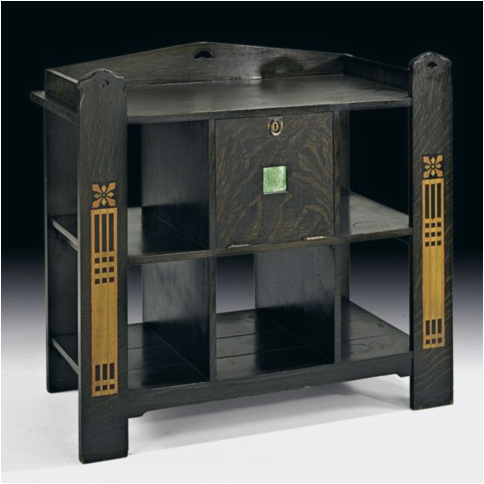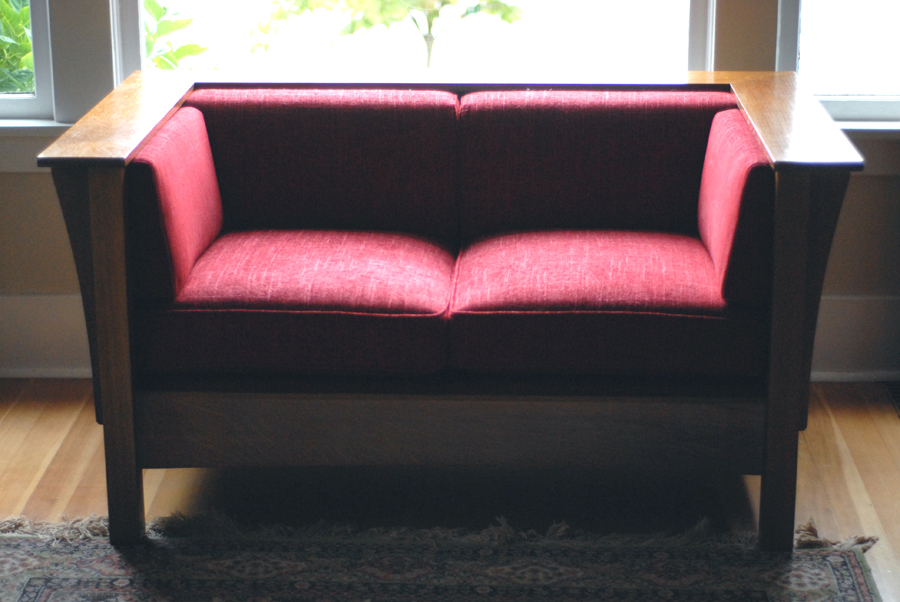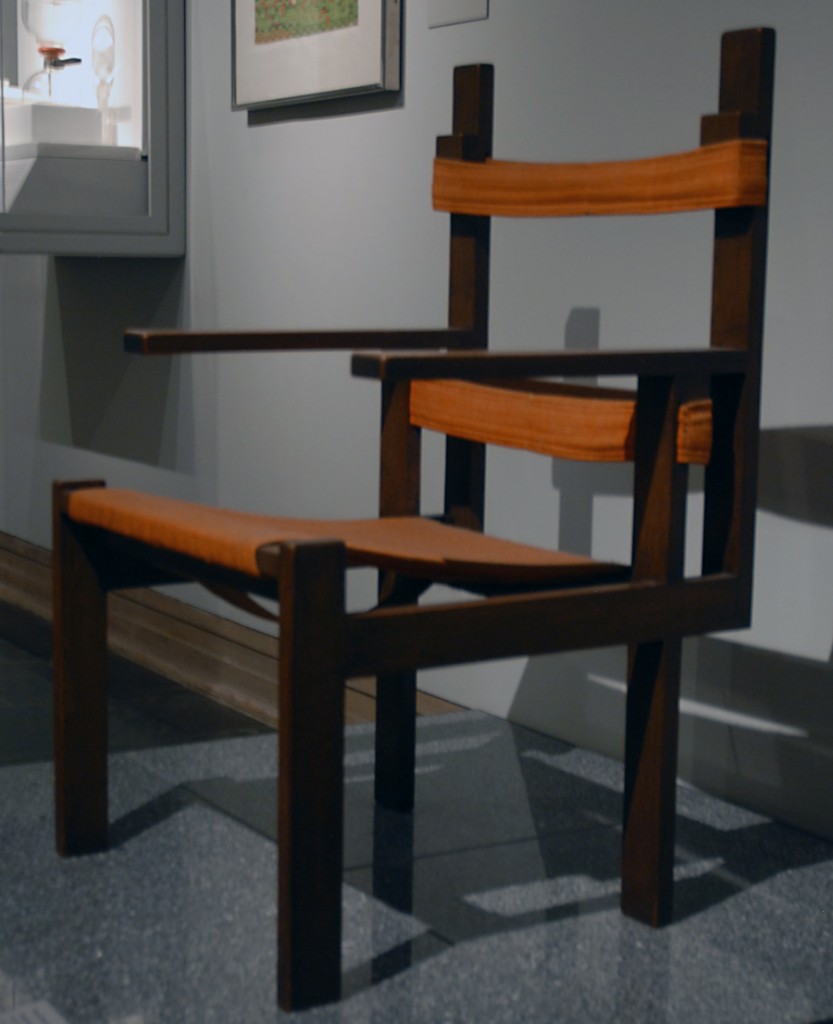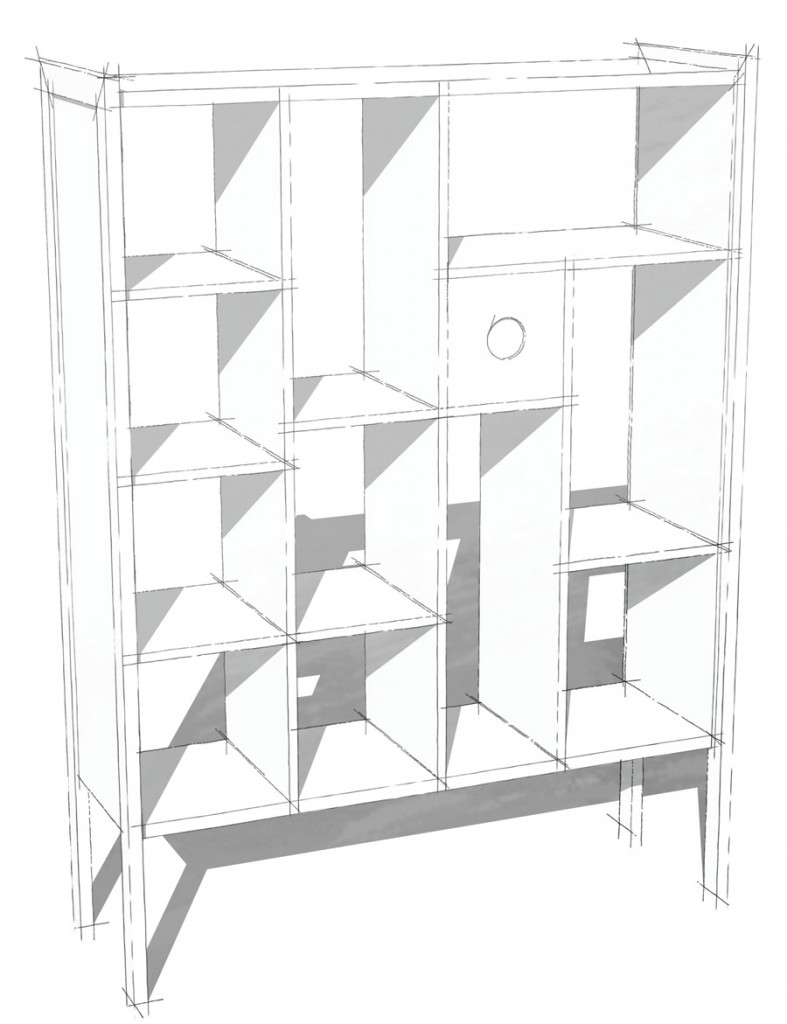I was skeptical of my own work towards the end of the settle build, but my doubts were alleviated by a trip to our upholsterer. He’d asked us to come into the shop to confirm the final look of the back and side cushions. Even with only the decking and bottom cushions complete at the point, the settle was looking really good. It’s now complete and installed, and we’re enjoying it–especially the dog.
Monthly Archives: September 2014
Shop of the Crafters Server

An Asian-inspired server by the Shop of the Crafters. Original auction posting at Liveauctioneers.
I’ve been researching furniture by various Arts & Crafts makers for my upcoming class on “Unknown Arts & Crafts” and came across this server by Cincinatti-based Shop of the Crafters. I would love to see the marketing material for the piece if it exists, since it might be the oddest server I’ve ever seen, beginning with the basic design and ending with the allusions to Chinese and Japanese forms. The server design eschews cupboards or drawers in favor of a grid of open shelves surrounding a single cupboard with a drop-front door decorated by an inset tile. The green of the tile calls to mind jade, and the ebonized finish evokes lacquerware. The cloudlifts on the front stretcher recur in Chinese furniture, and cutouts represent fans, another allusion to Asia. It’s a deliberate, if oddly mismatched effort to evoke Asia furniture, so the usual Shop of the Crafters inlay comes as a bit of shock, undermining the intent of the design.
Marcel Breuer at the Met
The placard accompanying Breuer’s armchair at the Met cites the strong influence of Dutch architect and designer on Gerrit Rietveld on this “de Stil-like” design. It also notes this is Breuer’s first use of a cantilevered frame. I find it interesting that it’s executed in wood where I associate most Bauhaus design with bent metal frames. In any case, it’s distinctive, if not necessarily comfortable . . .
Mid-Century Room Divider–Design
While the open floor plan is not without its appeal, it tends to work better when divided into functional zones. The folding screen, a staple of Arts & Crafts catalogs at the turn of the 20th century, is one way to help define these zones, but an open shelf like this design by an unknown maker accomplishes much the same effect without creating a solid barrier. The asymmetrical grid and single drawer liven the design, while construction is relatively straightforward. The two side frames capture the mitered case while dadoes house the shelves and vertical dividers. Half-blind dovetails join the sides and ends of the drawer box, but simpler joinery would suffice.



